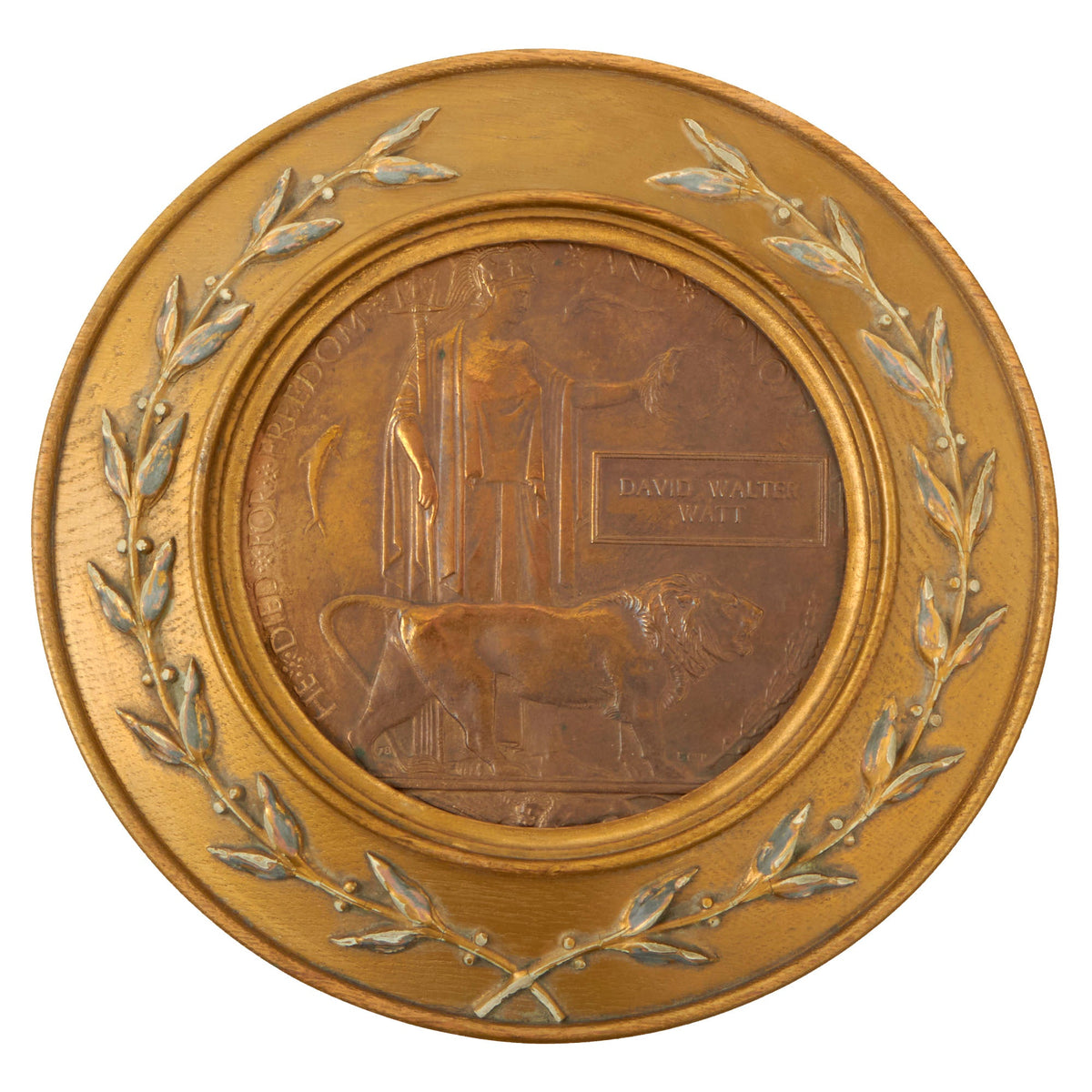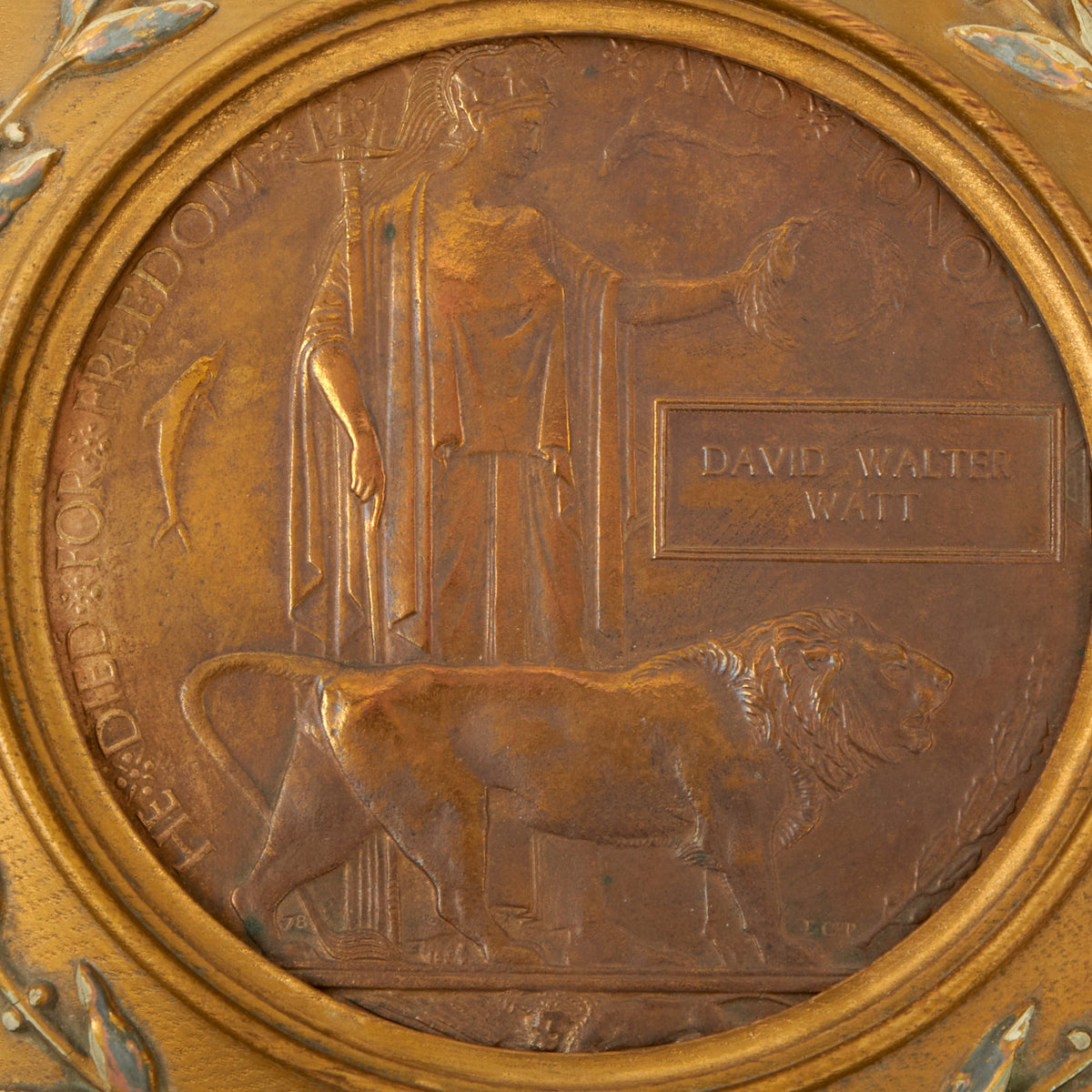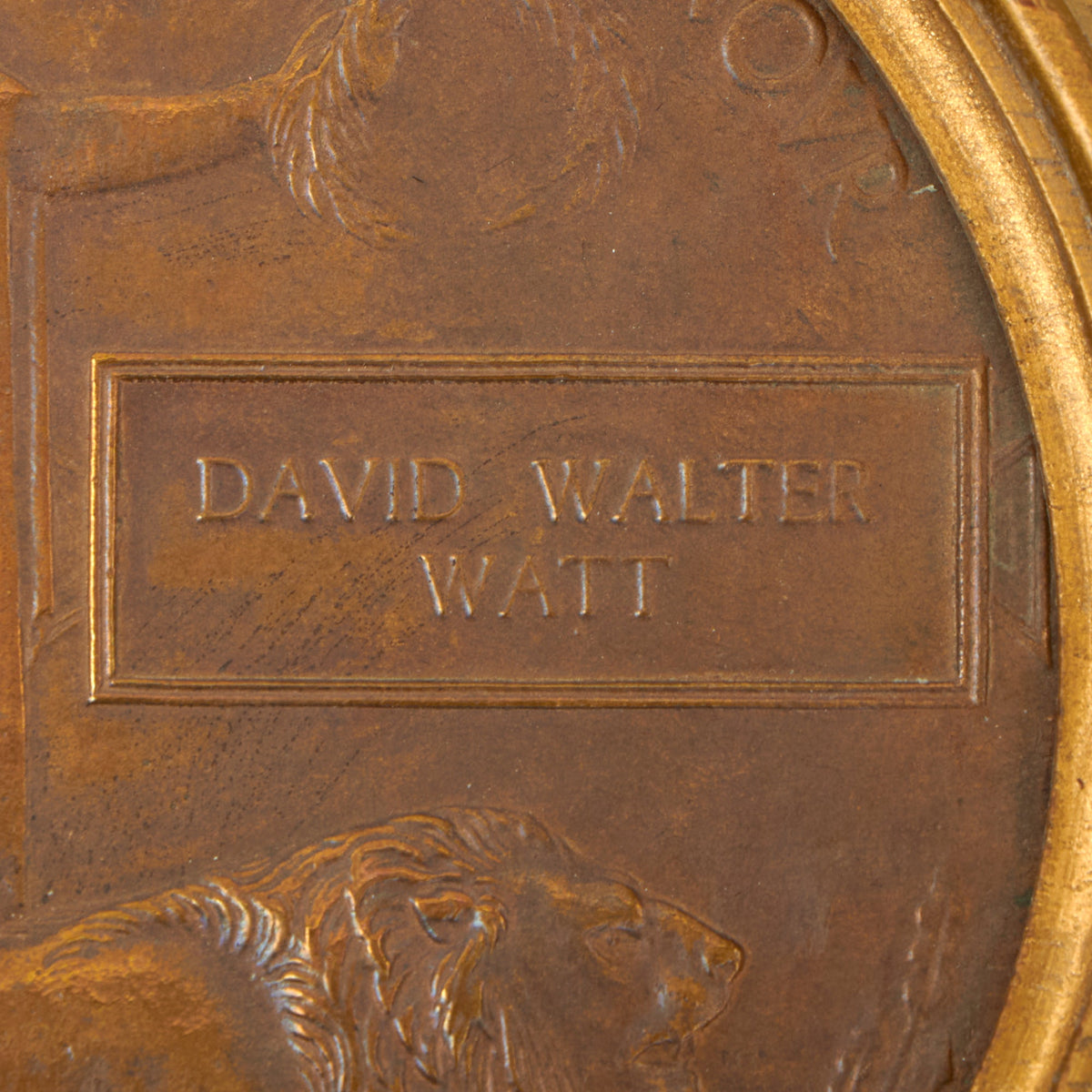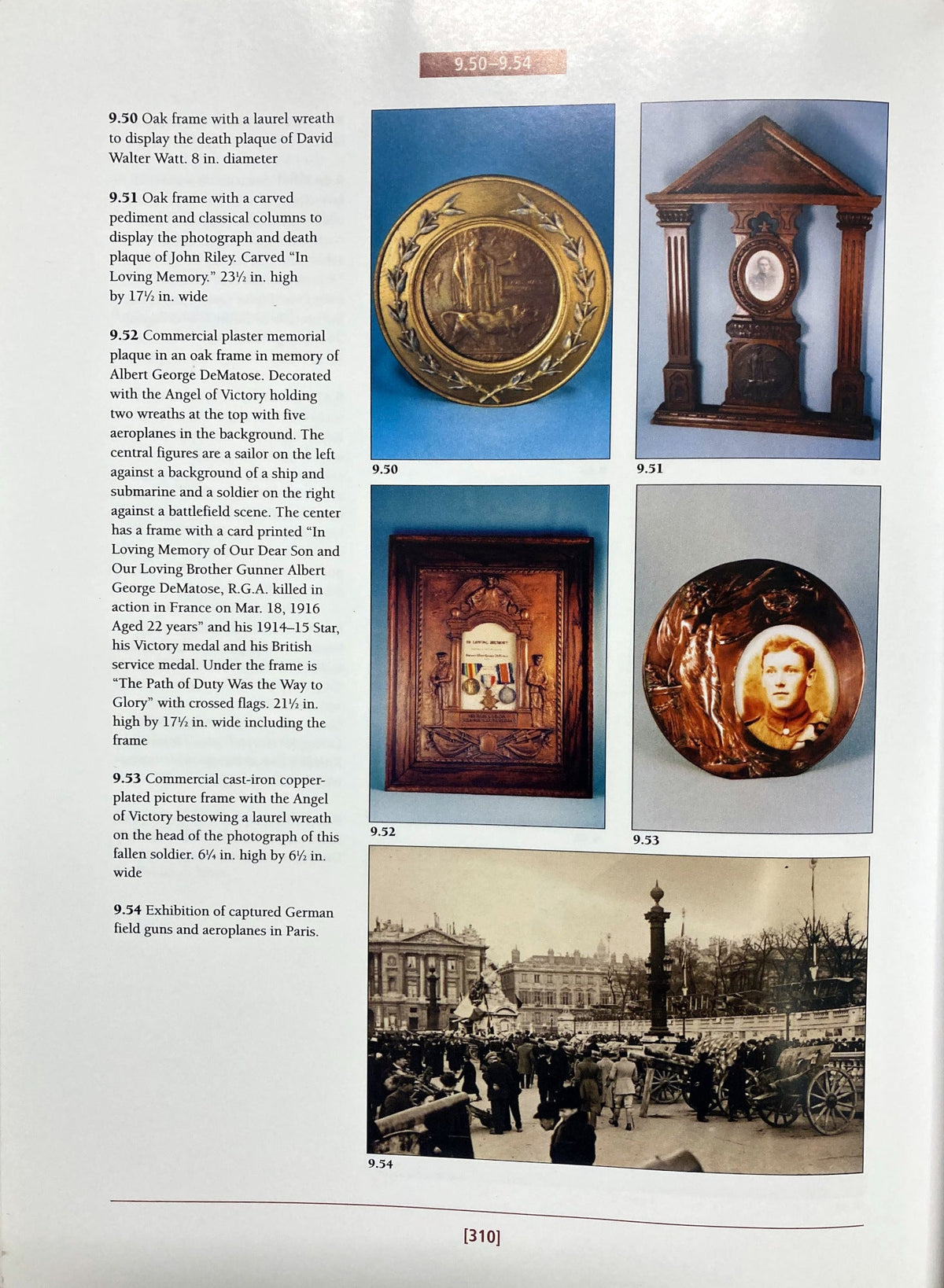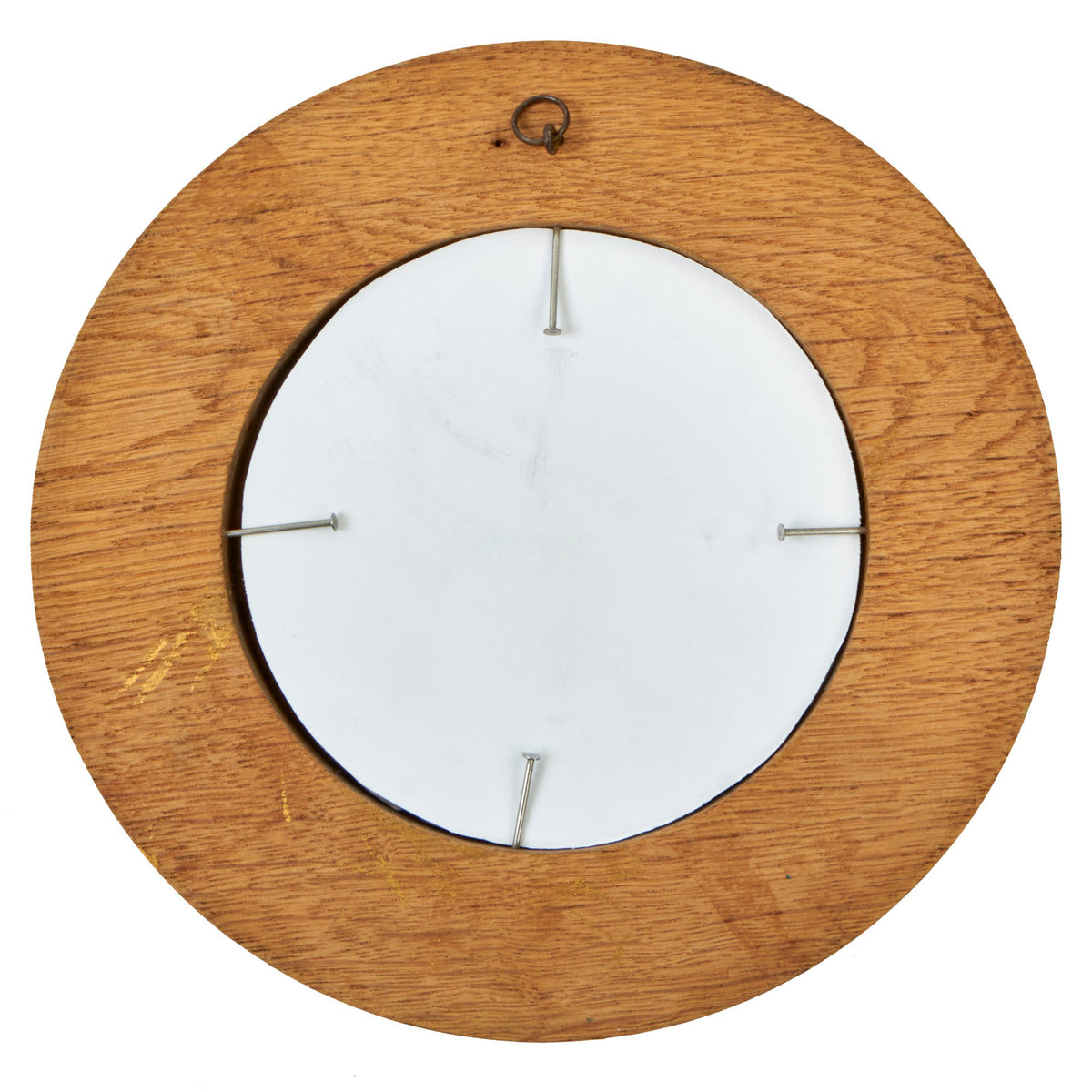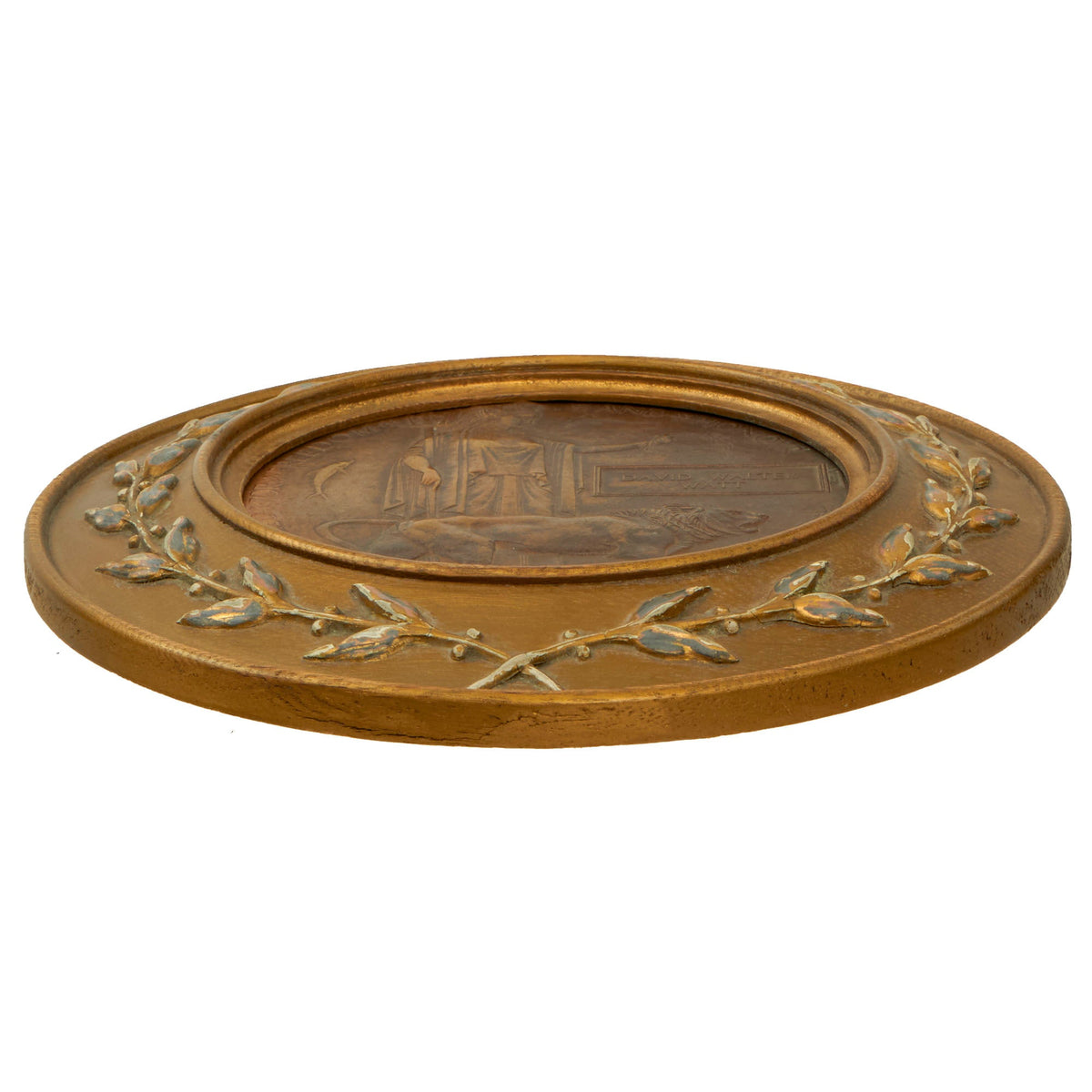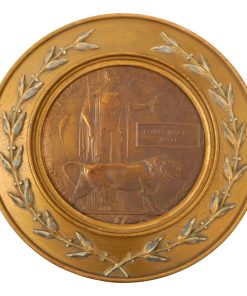Original British WWI Framed KIA Death Penny Soldier Memorial As Featured In The Book “Trench Art, An Illustrated History” by Jane Kimball on Page 310- David Walter Watt Original Items
$ 295,00 $ 118,00
Original Item: Only One Available. This is a lovely WWI Memorial Plaque commemorating the life and service of Ivan Dwight Hayes, a British/Canadian soldier who fell on an unknown battlefield with an unknown unit. We have not been able to locate any service information on this soldier.
Reference books are an essential part of any collector’s knowledge and growth in their particular field of interest. The 2004 book “Trench Art, An Illustrated History” by Jane Kimball is a comprehensive study of Trench Art and does a wonderful job in presenting the historical context of trench art throughout history. The book covers about 400 pages and includes hundreds of illustrations as well as mountains of primary source material and original photographs that document the evolution, styles and construction of the trench art genre. This framed memorial penny is found on page 310.
Comes more than ready for further research and display.
The Memorial Plaque was issued after the First World War to the next-of-kin of all British Empire service personnel who were killed as a result of the war.
The plaques (which could be described as large plaquettes) about 4.72 inches (120 mm) in diameter, were cast in bronze, and came to be known as the “Dead Man’s Penny”, or “Death Penny”, because of the similarity in appearance to the much smaller penny coin which itself had a diameter of only 1.215 inches (30.9 mm). 1,355,000 plaques were issued, which used a total of 450 tons of bronze, and continued to be issued into the 1930s to commemorate people who died as a consequence of the war.
It was decided that the design of the plaque was to be chosen from submissions made in a public competition. Over 800 designs were submitted, and the competition was won by the sculptor and medallist Edward Carter Preston using the pseudonym Pyramus, receiving two first place prizes of £250 for his winning and also an alternative design. The name Pyramus comes from the story of Pyramus and Thisbē which is part of Ovid’s Metamorphoses, a Roman tragedy narrative poem.
Carter Preston’s winning design includes an image of Britannia holding a trident and standing with a lion. The designer’s initials, E.CR.P., appear above the front paw. In her outstretched left hand Britannia holds an olive wreath above the ansate tablet bearing the deceased’s name cast in raised letters. Below the name tablet, to the right of the lion, is an oak spray with acorns. The name does not include the rank since there was to be no distinction between sacrifices made by different individuals. Two dolphins swim around Britannia, symbolizing Britain’s sea power, and at the bottom a second lion is tearing apart the German eagle. The reverse is blank, making it a plaquette rather than a table medal.
Around the picture the legend reads (in capitals) “He died for freedom and honour”, or for the 1500 plaques issued to commemorate women, “She died for freedom and honour”.
They were initially made at the Memorial Plaque Factory, 54/56 Church Road, Acton, W3, London from 1919. Early Acton-made plaques did not have a number stamped on them but later ones have a number stamped behind the lion’s back leg.
Fast Shipping with Professional Packaging
Thanks to our longstanding association with UPS FedEx DHL, and other major international carriers, we are able to provide a range of shipping options. Our warehouse staff is expertly trained and will wrap your products according to our exact and precise specifications. Prior to shipping, your goods will be thoroughly examined and securely secured. We ship to thousands clients each day across multiple countries. This shows how we're dedicated to be the largest retailer on the internet. Warehouses and distribution centres can be located throughout Europe as well as the USA.
Note: Orders with more than one item will be assigned a processing date depending on the item.
Before shipping before shipping, we'll conduct a thorough inspection of the items you have ordered. Today, the majority of orders will be delivered within 48 hours. The delivery time will be between 3-7 days.
Returns
The stock is dynamic and we cannot completely manage it because multiple stakeholders are involved, including our factory and warehouse. So the actual stock may alter at any time. It's possible that you may not receive your order once the order has been made.
Our policy is valid for a period of 30 days. If you don't receive the product within 30 days, we are not able to issue a refund or an exchange.
You can only return an item if it is unused and in the same state as the day you received it. You must have the item in its original packaging.
Related products
Uncategorized
Uncategorized
Uncategorized
Uncategorized
Uncategorized
Uncategorized
Uncategorized
Angolan Rebel 1970s era 60mm Inert Display Mortar from Angolan Civil War Original Items
Uncategorized
Uncategorized
Uncategorized
Uncategorized
Uncategorized
Uncategorized
Uncategorized
Uncategorized
Armored Burgonet Helmet & Polearm from Scottish Castle Leith Hall Circa 1700 Original Items
Uncategorized
Uncategorized
